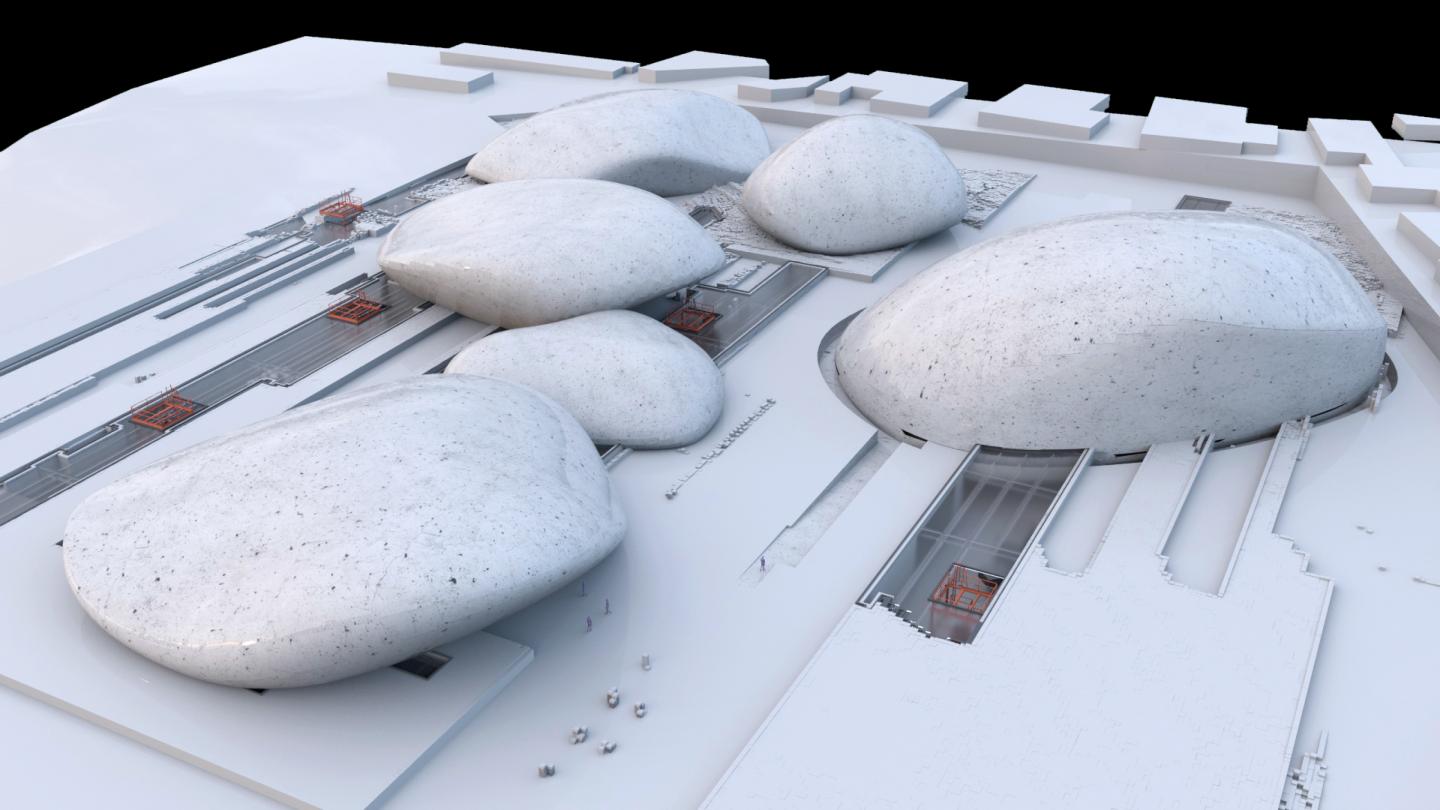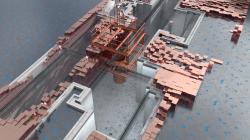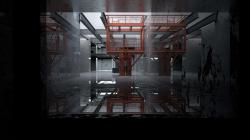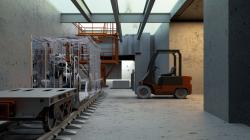IWA-A Digital Art Museum
IWA proposes a groundbreaking digital art museum that embodies the future of architectural design by integrating artificial intelligence (AI) into its conceptual framework. In a rapidly evolving technological landscape, where digital innovation continuously reshapes our interactions with art, the inclusion of AI is not merely beneficial but essential. This integration addresses the complexities of curating digital art, particularly non-fungible tokens (NFTs), which present unique challenges and opportunities for contemporary museums.
The Evolution of Museums in the Digital Age
Historically, museums have functioned as custodians of culture, preserving artistic works for public appreciation. However, with the rise of digital art forms, the traditional museum model is increasingly called into question. The advent of private freeport museums—secure storage facilities that allow wealthy collectors to avoid taxes and maintain anonymity—further complicates the art landscape. These developments highlight the growing divide between public and private art collections and raise critical questions about the accessibility and monetization of art.
In this context, IWA seeks to explore how museums can adapt to the digital age. This project emerges from in-depth research into global curation practices, examining how institutions are currently responding to the challenges posed by digital art. By analyzing various models, IWA aims to create a more inclusive and dynamic approach to art curation.
The Role of AI in Curatorial Practices
At the heart of the IWA proposal is the innovative use of AI. Leveraging AI technologies, particularly through collaborative dialogues with OpenAI’s ChatGPT 2.0, the design process explores solutions to traditional curatorial challenges. AI facilitates a deeper understanding of audience engagement, allowing curators to analyze data on visitor interactions, preferences, and behaviors. This data-driven approach enables the creation of personalized experiences that resonate with diverse audiences.
Furthermore, AI provides insights into the curation of NFTs, which differ significantly from traditional art forms. NFTs introduce unique considerations around ownership, authenticity, and display. By integrating AI into the curation process, IWA can develop adaptive strategies that respond to the rapidly changing landscape of digital art. This ensures that the museum remains relevant and engaging in an era defined by technological innovation.
Merging Digital and Physical Spaces
One of the most significant challenges faced by contemporary museums is the need to merge digital and physical spaces effectively. IWA addresses this challenge by exploring how AI can facilitate this integration. The project envisions a museum where digital art and physical installations coexist harmoniously, creating an immersive experience for visitors.
Through the use of augmented and virtual reality (AR/VR) technologies, IWA will enable visitors to engage with art in novel ways. Imagine walking through a gallery where physical artworks are enhanced by digital overlays, providing additional context or interactive elements that deepen understanding. This merging of realms not only enriches the visitor experience but also fosters a more profound connection between audiences and the art.
Inclusivity and Accessibility
A fundamental principle of the IWA proposal is the commitment to inclusivity and accessibility. In a world where access to art can be limited by socioeconomic factors, IWA advocates for a model that democratizes the art experience. By utilizing AI, the museum can analyze demographic data and tailor its offerings to reach underserved communities.
The use of technology also allows for a wider reach, enabling virtual access to exhibitions for those unable to visit in person. Online platforms can host digital exhibitions that showcase the museum’s collection and educational programs, ensuring that art is not confined to a physical space. This approach aligns with the broader mission of fostering cultural equity and ensuring that art is accessible to all, regardless of background.
Rethinking the Role of Museums
IWA challenges the conventional notion of what a museum can be. By rethinking the role of museums in the digital age, the proposal advocates for spaces that are not just repositories of art but active participants in the cultural dialogue. This requires an evolution of the architectural design itself, creating flexible environments that can adapt to changing exhibitions and community needs.
The design of IWA will incorporate modular spaces that can be easily reconfigured to accommodate different types of art, events, and community engagements. This adaptability allows the museum to respond to the dynamic nature of contemporary art practices and the evolving interests of the public. By fostering a culture of experimentation and collaboration, IWA aims to position itself as a hub for artistic innovation.
The Architectural Discourse
The integration of AI into IWA’s design reflects a broader architectural discourse that emphasizes adaptability, sustainability, and responsiveness to contemporary needs. This discourse acknowledges that architecture is not just about buildings but also about the experiences and interactions that those spaces facilitate.
By harnessing AI, architects and designers can create environments that respond to real-time data, optimizing space usage and enhancing visitor experiences. This approach aligns with the principles of smart architecture, where technology and design work in tandem to create more efficient and engaging environments.
Community Engagement and Collaboration
A critical aspect of the IWA proposal is its emphasis on community engagement. The museum will actively seek input from diverse stakeholders, including artists, curators, and local communities, to ensure that its offerings reflect the needs and interests of the public. This collaborative approach fosters a sense of ownership and connection, encouraging visitors to become active participants in the cultural ecosystem.
Workshops, educational programs, and artist residencies will be integral components of the museum’s mission. By providing opportunities for creative expression and learning, IWA aims to cultivate a vibrant community of artists and art enthusiasts. This commitment to engagement will ensure that the museum remains a relevant and dynamic space in the cultural landscape.
The Future of IWA
As IWA moves forward, the project will continue to explore the intersections of art, technology, and architecture. Ongoing research into emerging technologies will inform the museum’s design and programming, ensuring that it remains at the cutting edge of the digital art movement.
Additionally, IWA will seek partnerships with tech companies, educational institutions, and art organizations to further enrich its offerings and expand its reach. These collaborations will enhance the museum’s capacity to innovate and adapt, positioning it as a leader in the evolving landscape of digital art and curatorial practices.
Conclusion
In conclusion, IWA represents a transformative vision for the future of museums in the digital age. By integrating artificial intelligence into its conceptual framework, the project addresses the complexities of curating digital art, particularly NFTs, while advocating for inclusivity and accessibility.
Through innovative design and a commitment to community engagement, IWA challenges traditional boundaries and redefines the role of museums in contemporary society. This proposal positions IWA at the forefront of architectural exploration, championing the synergy between technology and design to create a space where art is not only displayed but experienced in profound and meaningful ways.
Ultimately, IWA aspires to foster a cultural dialogue that resonates with diverse audiences, ensuring that art remains a vibrant and accessible part of our shared human experience.
2021
Building Information Modeling (BIM): BIM tools facilitate detailed planning and design, allowing for efficient visualization and management of the museum's structure and spatial relationships.
Artificial Intelligence (AI): Leveraging AI tools like OpenAI’s ChatGPT 2.0, the project explores innovative solutions for curating digital art and NFTs, enhancing the design process through data-driven insights and adaptive strategies.
Machine Learning Algorithms: These algorithms analyze user interactions and preferences, enabling personalized art experiences and dynamic curation based on real-time data.
Interactive Displays: Utilizing augmented and virtual reality (AR/VR) technologies, the museum will provide immersive experiences, allowing visitors to engage with art in novel ways.
Author: Cristina Cotruta









